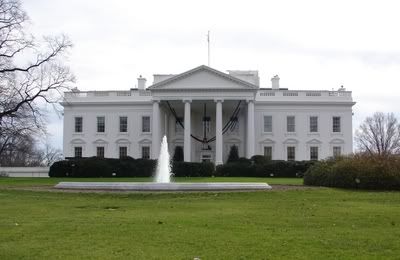Again, remember how we got here.
President Obama did not walk into the Oval Office with a balance sheet, with money in the coffers and without headaches.
The fake outrage of Republicans is just that fake outrage. Republicans did not stand in the way of George W. Bush and all the money he spent on the Iraq and Afghanistan wars and as everything is unraveling we see more contractors who have made billions off the Americans back without nothing to show for it, especially in Iraq.
So, while the Republicans are ginnin' up to stand in the way of the public option plan, they need to remember how we got here. They had a lot to do with it, in fact they are mostly responsible for it.
There are two basic truths about the enormous deficits that the federal government will run in the coming years.
The first is that President Obama’s agenda, ambitious as it may be, is responsible for only a sliver of the deficits, despite what many of his Republican critics are saying. The second is that Mr. Obama does not have a realistic plan for eliminating the deficit, despite what his advisers have suggested.
The New York Times analyzed Congressional Budget Office reports going back almost a decade, with the aim of understanding how the federal government came to be far deeper in debt than it has been since the years just after World War II. This debt will constrain the country’s choices for years and could end up doing serious economic damage if foreign lenders become unwilling to finance it.
Now this is what happened when Bush came into office, the one who destroyed the proposed surplus.
The story of today’s deficits starts in January 2001, as President Bill Clinton was leaving office. The Congressional Budget Office estimated then that the government would run an average annual surplus of more than $800 billion a year from 2009 to 2012. Today, the government is expected to run a $1.2 trillion annual deficit in those years.
You can think of that roughly $2 trillion swing as coming from four broad categories: the business cycle, President George W. Bush’s policies, policies from the Bush years that are scheduled to expire but that Mr. Obama has chosen to extend, and new policies proposed by Mr. Obama.
The first category — the business cycle — accounts for 37 percent of the $2 trillion swing. It’s a reflection of the fact that both the 2001 recession and the current one reduced tax revenue, required more spending on safety-net programs and changed economists’ assumptions about how much in taxes the government would collect in future years. read more here....
For President Obama to implement his plans, the window of opportunity is NOW, not later. Why now? He has the political capital, that is why. Which is why we see the Obama Administration rolling everything out now, versus later.
Home Page








 Logging you in...
Logging you in...





